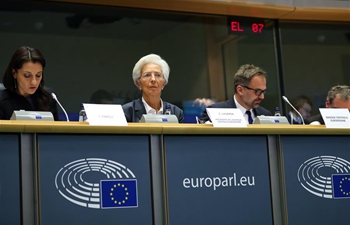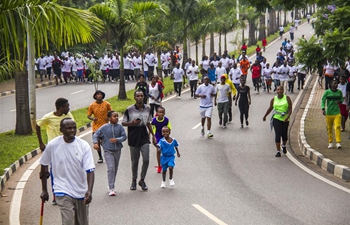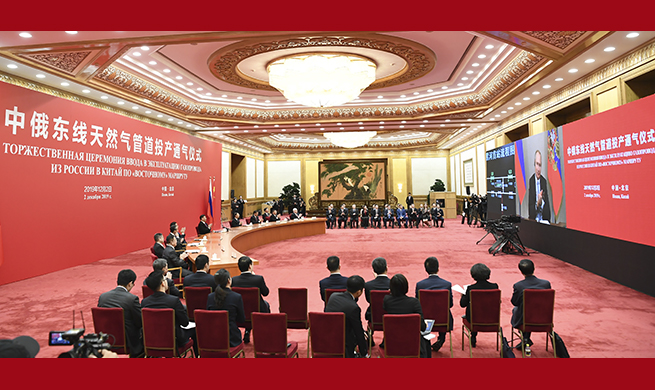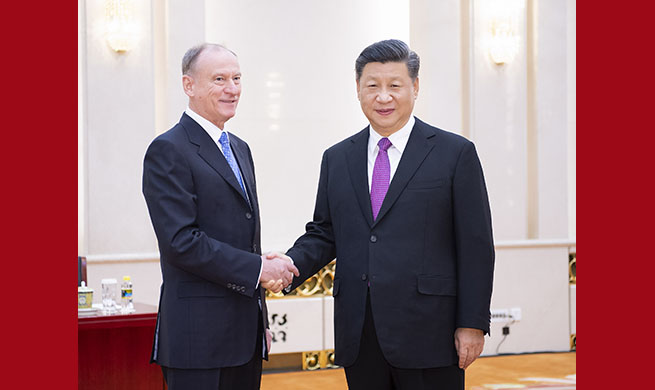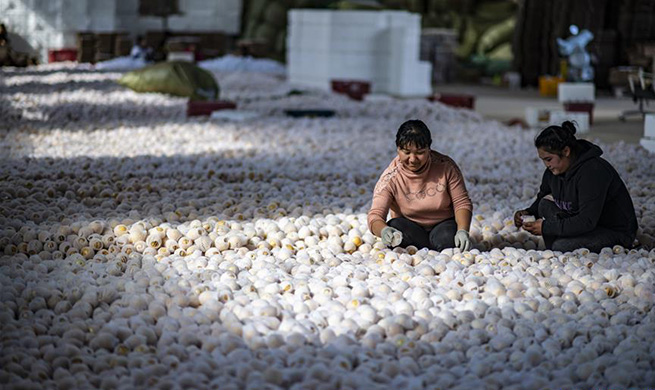BEIJING, Dec. 3 (Xinhua) -- China has made significant headway in poverty-alleviation through healthcare, as the country's targeted medical service, such as home visiting physician service, remote healthcare service and caring center service for the disabled, are benefiting more people in poverty-stricken areas.
The new measures and arrangements are helping the country secure a victory in winning the battle against poverty.
Liu Tiezhu, a 29-year-old epilepsy patient living in a remote village in Harbin, northeast China's Heilongjiang Province, had suffered frequent headaches and nausea after a head trauma four years ago.
The village, an impoverished county of Harbin, has no access to trains and it takes hours for local people to get to a hospital.
"Many local villagers choose not to go to the hospital, which usually leads to deterioration or delay of treatment," said Hou Guixia, a rural doctor.
As the country promotes remote medical services, better and timely medical treatments have become much more accessible to people like Liu.
In this winter, Liu got a magnetic resonance imaging examination at the county's hospital with the help of Hou. An hour later, the physician of a higher level hospital received Liu's medical files via a remote transmission system and made a diagnosis, the result of which brought Liu huge relief.
Liu also benefited from the basic medical insurance and serious illness insurance this summer when he suffered from a stomach illness. "The total expense was over 5,000 yuan (about 707 U.S. dollars), but I only paid about 300 yuan for the treatment," Liu said.
Basic medical insurance now covers over 1.35 billion urban and rural residents in China, according to China's official statistics.
Ever since China initiated its project for poverty alleviation through healthcare nationwide in 2016, an increasing amount of high-quality medical resources have covered a widened area and more people.
Guli Gaze, who lives in a small village called Pilal deep in China's westernmost Pamir plateau, is in quite good physical condition even above the age of 80.
"Thanks to the good care of Ayimgul Tayir," Guli said.
Three years ago, village doctor Ayimgul traveled over 18 kilometers in the night to visit Guli, who at that time was suffering from sudden lung disease. Ayimgul stayed at Guli's place for five days to offer her medical treatments and care.
The township's health center covered all expenses of medicine for Guli.
Over the past 21 years, Ayimgul has been dedicating herself to work as a village doctor, bringing medicines and medical treatments to people living in remote places.
"The healthcare condition in Pilal is poor. I was born here. I have to come back and do something," said Ayimgul.
The government has supported the building of 3,438 standardized township health centers, 14,000 village health centers, and sent 14,000 general practitioners to poverty-stricken areas since 2015.
As the new building of the township health center rose from the ground, more village doctors and advanced equipment have joined Ayimgul.
To avoid disability-caused poverty, many caring centers to help people with severe disabilities have been built in China.
Li Zhide is now over 70 and handicapped in the right hand and leg due to a car accident. He lives in a caring center in Zhumadian City in central China's Henan Province.
Apart from free meals and medical care, Li can also receive professional nursing in the center.
A total of 45 disabled people from impoverished families now live in that center, which has a well-designed living room, treatment room, canteen and other equipment for caring.
Mainly funded by the government, there are 103 caring centers now catering to 2,016 people with severe disabilities in the city of Zhumadian, and 12 more are under construction.
China is speeding up poverty reduction via healthcare.
The country aims to have all villages covered by medical institutions and personnel by the end of 2019, according to the National Health Commission.






